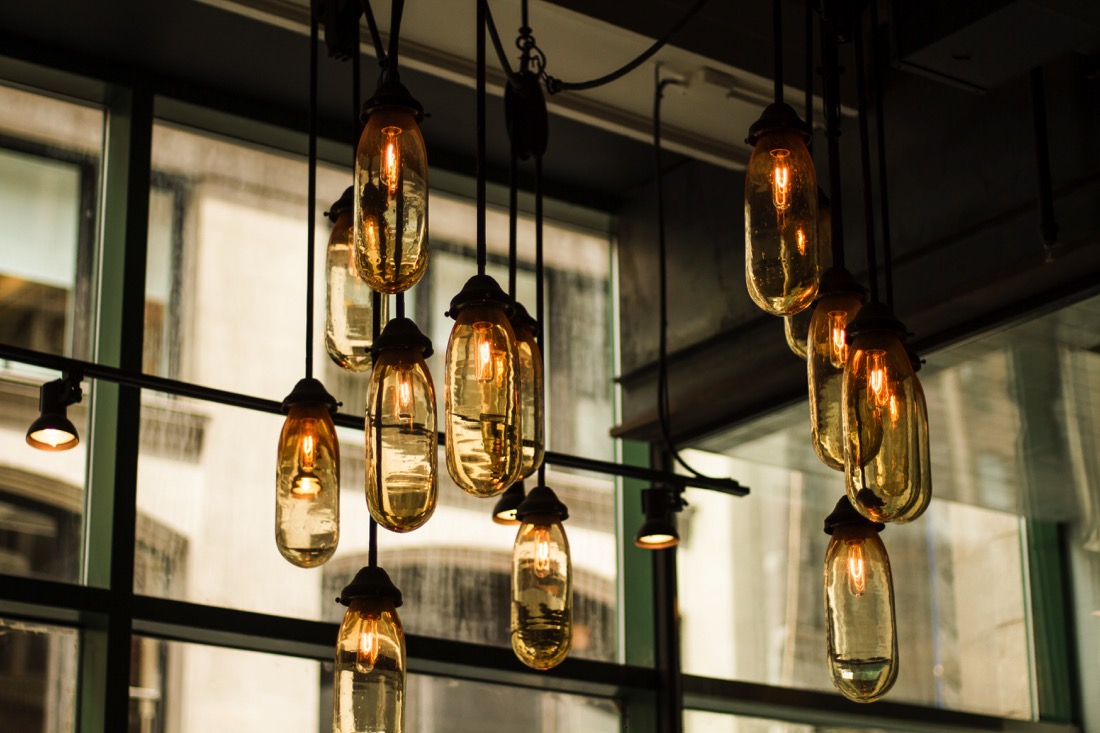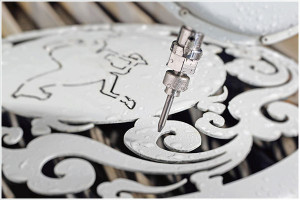
Small Waterjet Machine for Sale: Your Ultimate Guide to Compact Precision Cutting
In the world of precision fabrication, versatility is king. Whether you’re a small workshop owner, a passionate hobbyist, a research lab technician, or a startup entrepreneur, the ability to cut intricate shapes from virtually any material is a game-changer. This is where the search for a small waterjet machine for sale becomes incredibly relevant. These compact powerhouses offer a significant portion of the capabilities of their larger industrial cousins but in a footprint and price point accessible to smaller operations. If you’re exploring the market for a small waterjet machine for sale, this comprehensive guide delves into five crucial aspects to inform your decision.
What Exactly is a Small Waterjet Machine?
Before diving into the specifics of finding one for sale, it’s essential to understand what constitutes a “small” waterjet machine. Unlike massive industrial systems designed for thick steel plate all day, small waterjets prioritize:
Compact Footprint: Designed to fit into tighter workshop spaces, garages, or labs, often requiring less floor area and potentially lower ceiling height.
Lower Power Requirements: Typically utilize smaller intensifier pumps (e.g., 30 HP, 40 HP, 50 HP) compared to 100 HP+ industrial units, reducing electrical demands and operating costs.
Reduced Cutting Envelope: The X-Y cutting bed is smaller, commonly ranging from tabletop models (e.g., 2′ x 2′) up to around 4′ x 8′ or 5′ x 10′ for the larger “small” category machines. Z-axis travel (thickness capacity) is also generally less.
Affordability: Represent a significantly lower initial investment compared to full-scale industrial machines, making waterjet technology attainable for smaller budgets.
Ease of Use & Maintenance: Often designed with simpler controls and easier maintenance routines suitable for operations without dedicated waterjet technicians.
Despite their size, a small waterjet machine for sale still harnesses the core waterjet principle: ultra-high-pressure water (or water mixed with abrasive garnet) forced through a tiny nozzle to erode material with exceptional precision and minimal heat-affected zone. This makes them ideal for cutting metals (steel, aluminum, brass, titanium), stone, glass, composites, plastics, rubber, foam, and more.
Key Applications: Why Buy a Small Waterjet Machine?
Understanding the diverse applications helps justify the investment in a small waterjet machine for sale:
Prototyping & R&D: Rapidly iterate designs across various materials without expensive tooling changes. Perfect for engineers and product developers.
Small Batch Production: Efficiently produce limited runs of parts, signage, decorative elements, gaskets, shims, or specialized components.
Artistic & Decorative Fabrication: Create intricate designs in metal, stone, glass, or wood for sculptures, architectural features, jewelry, and custom home decor.
Tool & Die Shops: Produce precise tooling components, fixtures, jigs, and molds from hardened steels or exotic alloys.
Educational Institutions: Provide hands-on learning with advanced manufacturing technology in universities, colleges, and technical schools.
Maintenance & Repair Shops: Cut custom replacement parts on-demand, eliminating long lead times for obsolete components.
Specialized Crafts & Hobbies: Enable ambitious creators working with challenging materials to achieve professional results.
The versatility of a small waterjet machine for sale means it can handle jobs that would otherwise require outsourcing to multiple specialized shops (laser, plasma, router, EDM), saving significant time and money while bringing control in-house.
Essential Features to Compare When Looking for a Small Waterjet Machine for Sale
Not all small waterjets are created equal. When evaluating a small waterjet machine for sale, pay close attention to these critical features:
Pump Type and Pressure:
Intensifier Pumps: The industry standard, known for robust pressure generation (typically 40,000 – 60,000 PSI for small machines) and reliability. Consider HP rating and expected maintenance intervals.
Direct-Drive Pumps: Often found on entry-level or very compact models. Generally operate at lower pressures (30,000 – 50,000 PSI) and may have shorter lifespan seals but can be quieter and have lower initial cost. Crucial to assess duty cycle suitability.
Cutting Bed Size (X, Y, Z Travel): Match the bed size to your typical part dimensions and material thickness. Consider not just maximum part size but also efficient nesting of multiple smaller parts. Z-axis height determines maximum material thickness capacity.
Motion System & Accuracy:
Linear Guides vs. V-Groove Bearings: Precision linear guides offer superior rigidity, accuracy, and longevity compared to simpler v-groove systems, especially under abrasive conditions.
Drive Systems (Ballscrew vs. Rack & Pinion): Ballscrews generally provide higher precision and repeatability, while rack and pinion can be more cost-effective and suitable for larger travel beds.
Positioning Accuracy and Repeatability: Look for specifications (e.g., ±0.001″ or better) and understand how they are measured.
Control System & Software:
CNC Controller: User-friendly interface is key for smaller shops. Look for features like touchscreen operation, job queuing, and diagnostic tools. Compatibility with common CAD/CAM software is essential.
CAM Software: Is proprietary or industry-standard software included? Does it handle nesting, taper compensation, and provide simulation?
Abrasive Delivery System: A consistent, reliable abrasive feed is critical for cut quality and nozzle life. Look for well-designed hoppers, metering valves, and mixing tubes.
Tank System & Garnet Recovery (Optional): Smaller machines often have integrated catch tanks. Consider ease of maintenance and whether garnet recovery/recycling systems are available or feasible.
Cutting Head Technology: Features like dynamic height control (DHC/ATHC) automatically maintain optimal nozzle standoff distance, crucial for quality cuts, especially on uneven surfaces. Check nozzle options and availability.
Carefully weighing these features against your specific needs and budget is vital when selecting a small waterjet machine for sale.
Critical Considerations Before You Buy Your Small Waterjet
Purchasing a small waterjet machine for sale is a significant investment. Beyond the machine specs, consider these crucial factors:
Total Cost of Ownership (TCO):
Initial Purchase Price: The obvious starting point.
Installation & Setup: Costs for rigging, electrical hookup (often requiring 3-phase power, though some small models run on high-amperage single-phase), water supply/drain, and potentially facility modifications (floor reinforcement, sound dampening).
Consumables: Abrasive garnet (a major ongoing cost), orificies, mixing tubes, high-pressure seals, and cutting water (needs filtering).
Maintenance: Regular preventative maintenance kits, potential pump rebuilds, and replacement parts. Factor in labor if not done in-house.
Utilities: Electricity (especially the pump) and water usage.
Training: Operator training costs from the manufacturer or integrator.
Space & Facility Requirements: Ensure you have adequate floor space (including clearance for operation and maintenance), ceiling height, proper electrical supply, a reliable water source (often needing pre-filtration), and a drain system capable of handling abrasive slurry. Consider noise levels and potential for mist/splash.
Operator Skill & Training: While modern controls simplify operation, understanding CAD/CAM, machine setup, troubleshooting, and basic maintenance is essential. Budget for training.
Material Handling: How will you load and unload sheets or blocks of material onto the machine bed? Manual handling suffices for lighter/smaller materials, but heavier items may require lifting equipment.
Support & Service: Investigate the manufacturer’s or dealer’s reputation for technical support, warranty coverage, spare parts availability, and local service technician access. Downtime can be costly.
New vs. Used: While a new small waterjet machine for sale comes with warranty and latest tech, certified pre-owned or well-maintained used machines can offer substantial savings. Thorough inspection and service history are paramount for used equipment.
Where to Find a Small Waterjet Machine for Sale: Navigating Your Options
Once you’ve defined your needs and budget, it’s time to search for that perfect small waterjet machine for sale. Explore these avenues:
Direct from Manufacturers: Leading manufacturers of smaller waterjets (e.g., OMAX, WardJet, Bystronic, Resato, KMT, Techni Waterjet, Shenyang Head, APW) often sell directly or through a dedicated dealer network. Visiting their websites is the best source for new machine specifications, configurations, and contacting sales reps. They can provide detailed quotes and application support.
Authorized Dealers & Integrators: Many manufacturers rely on regional dealers. These partners offer localized sales, support, training, and sometimes showcase demo units. They are invaluable for hands-on evaluations and understanding local service capabilities.
Industrial Machinery Auctions: Online auction platforms (e.g., BidSpotter, eBay Industrial, Machinery Network) can feature used or reconditioned small waterjets, often from businesses closing or upgrading. Exercise caution – inspect thoroughly (ideally in person), understand auction terms, and factor in potential refurbishment costs. Finding a specific small waterjet machine for sale here can be hit-or-miss.
Used Machinery Dealers: Specialty dealers focus on buying and selling pre-owned fabrication equipment. They often inspect, service, and sometimes offer limited warranties on the machines they list. This can be a more reliable source than general auctions for a used small waterjet machine for sale.
Online Marketplaces: General platforms like eBay or specific industrial marketplaces (e.g., MachineTools.com) can list both new and used machines. Scrutinize sellers carefully, especially for private sales. Verify condition and functionality meticulously.
Trade Shows: Attending manufacturing and fabrication trade shows (e.g., FABTECH, IMTS) is an excellent way to see multiple small waterjet models in action, compare features side-by-side, talk directly to engineers and sales reps, and sometimes secure show specials on a small waterjet machine for sale.
The search for a small waterjet machine for sale represents a strategic investment in expanding your capabilities, increasing efficiency, and unlocking new creative or production possibilities. By understanding what defines a small waterjet, recognizing its vast applications, meticulously comparing key features and specifications, thoroughly evaluating the total cost of ownership and facility needs, and knowing where to look, you can make a confident and informed purchasing decision.
A well-chosen small waterjet machine for sale is more than just a tool; it’s a gateway to unparalleled material versatility and precision cutting, empowering small businesses, innovators, educators, and artisans to bring their most complex ideas to life, right in their own workspace. Take the time to research, ask questions, and potentially arrange demos to find the compact waterjet solution that perfectly aligns with your unique requirements and budget. The precision you seek is within reach.
continue reading
Related Posts
- 1371 words6.9 min read
- 1449 words7.3 min read



